COVID-19
COVID-19 AROUND PIGEON LAKE
CORONAVIRUS COVID-19 DISEASE CAUSED BY SARS-COV-2 VIRUS
- Alberta’s second COVID Public Health Emergency State of Emergency was declared on November 24, 2020, this has now passed (Feb 22, 2021).
Trusted Official Information As this is an evolving situation, all updates can be found at:
- Alberta Government has the most complete official information available at www.alberta.ca/covid19
- ReLaunch Guidance www.alberta.ca/biz-connect.aspx
- Alberta Health Services www.ahs.ca/covid
- Canadian Public Health www.canada.ca/en/public-health/services/diseases/coronavirus-disease-covid-19.html
This Webpage Update Log:
- Jan 4, 2021 updated specific Canada Public Health Link
- Dec 8, 2020 added Alberta Positivity Rate Graph, Defined:Positivity Rate
- November 25, 2020 added Alberta Death Graph
- November 24, 2020 Alberta declared another public health emergency and announced new strong restrictions to protect the health system and reduce the rising spread of COVID-19 cases.
- November 22, 2020 added hospitalization detail graphs to this page.
- All graphs are automatically updated daily.
- Alberta COVID-19 relaunch Regional status map and Subscribe for Official Outbreak Email Notifications now available.
- This page updated on June 2nd with hospitalizations graph by age in Alberta.
- On May 16th with reopening statistics and explainations.
- In Canada, what Coronavirus (COVID-19) numbers should we be watching?
Government of Canada resources
- Canada’s response to COVID-19
- Outbreak update – federal government hub for daily COVID-19 updates
- Technical guidance for communities, schools/daycares, health professionals and business
- Community-based measures to mitigate the spread of COVID-19
- Risk-informed decision-making for mass gatherings
- COVID-19 awareness resources
- Vulnerable populations
- How to isolate at home
- Travellers returning to Canada
- Travellers returning from Iran, Italy and Hubei Province, China
- Know the facts: Factsheet | Infographic
- Be prepared: Factsheet | Infographic
- Reduce the spread of COVID-19: Wash your hands
- How to care for a person with COVID-19 at home: Advice for caregivers
- Know the difference: Self-monitoring, self-isolation, and isolation for COVID-19
COVID-19 can cause serious respiratory illness. Because it is a new virus with no treatment or immunity in people, it is critical for people with any symptoms (cough, fever, shortness of breath, runny nose or sore throat) to stay home and self-isolate to keep it from spreading.
In Alberta, “Given global spread, it is likely that new cases will continue to be detected in our province. While most people who catch this virus have a mild illness, it can be severe or even deadly for our elderly, and those with other medical conditions.” – Dr. Deena Hinshaw, Chief Medical Officer of Health
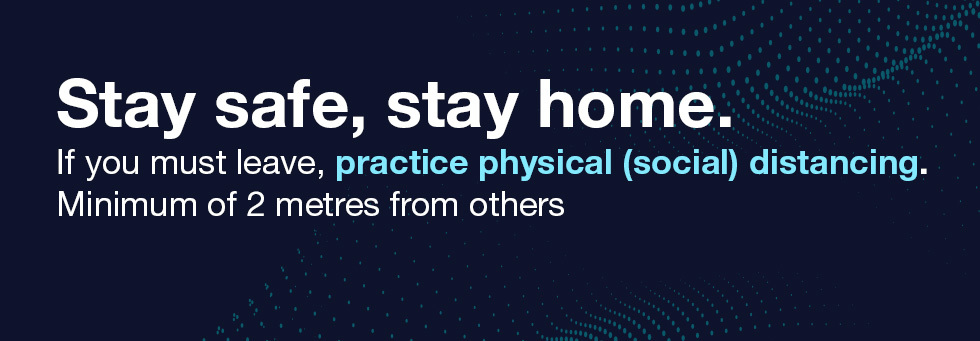
WHAT CAN YOU DO?
- Watch this short video on how you can be better prepared.
- Avoid international travel at this time
- Maintain for “social-distancing” (trying to keep yourself away from other people, especially large crowds)
- Wash your hands often and well
- Cover your cough
- Avoid touching eyes, nose and mouth with unwashed hands
- Avoid close contact with people who are sick
- Clean and disinfect surfaces that are frequently touched
- Stay at home and away from others if you are feeling ill
Remember, the fewer people who catch the disease, the better hospitals can help those at risk.
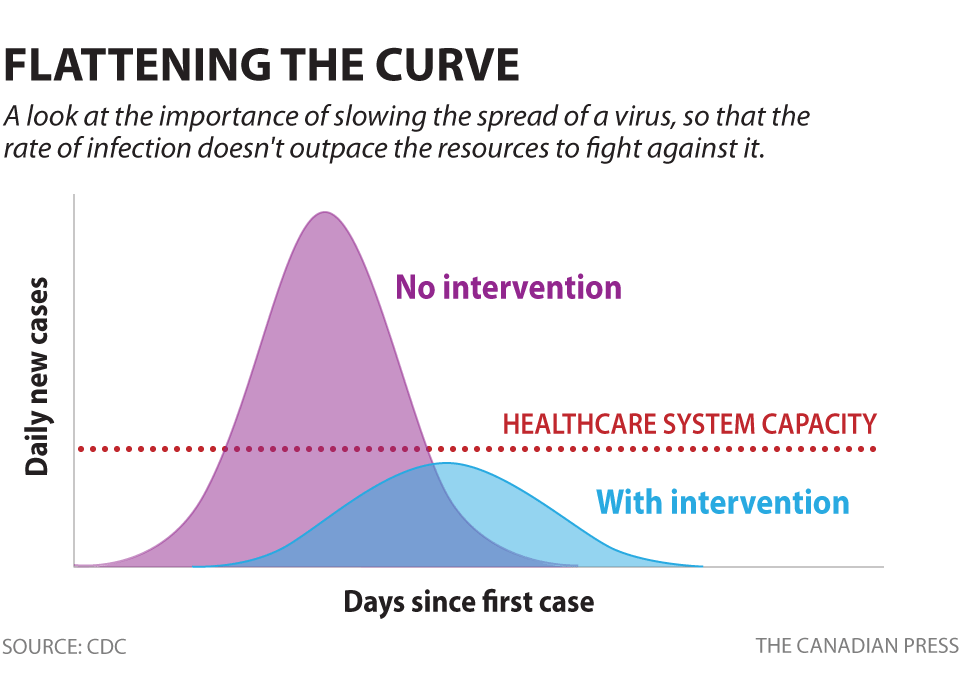
HOSPITALIZATION GRAPHS
HOSPITALIZATION GRAPHS
ALBERTA COVID-19 DEATHS
WHAT SHOULD I DO IF I THINK I HAVE COVID-19? IF YOU HAVE SYMPTOMS SUCH AS FEVER, COUGH AND DIFFICULTY BREATHING AND HAVE TRAVELLED OUTSIDE CANADA OR HAVE BEEN EXPOSED TO SOMEONE WHO HAS COVID-19, STAY HOME AND CALL HEALTH LINK 811. DO NOT GO TO A PHYSICIAN’S OFFICE, A HEALTH CARE FACILITY OR A LAB WITHOUT CONSULTING WITH HEALTH LINK 811 FIRST. CALL 911 IF YOU ARE SERIOUSLY ILL AND NEED IMMEDIATE MEDICAL ATTENTION AND INFORM THEM THAT YOU MAY HAVE COVID-19. self-assessment-button
If you are under quarantine and are running low on supplies, remember you can phone the local store to place & pay for your order and then have a neighbour or friend make the delivery without making any contact with you.
Here are some colour and black’n white versions of posters for your organization windows.
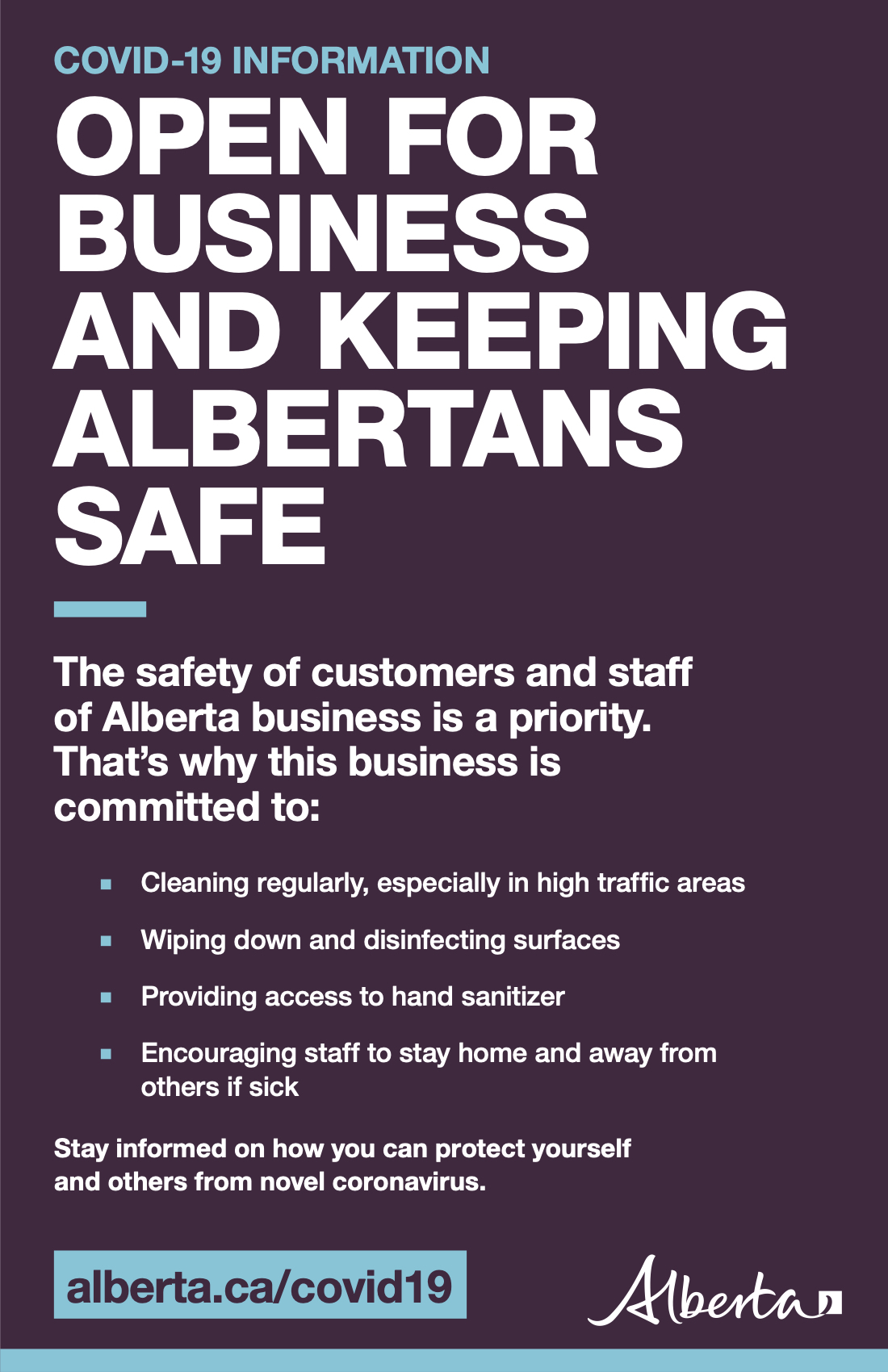
Open for Business
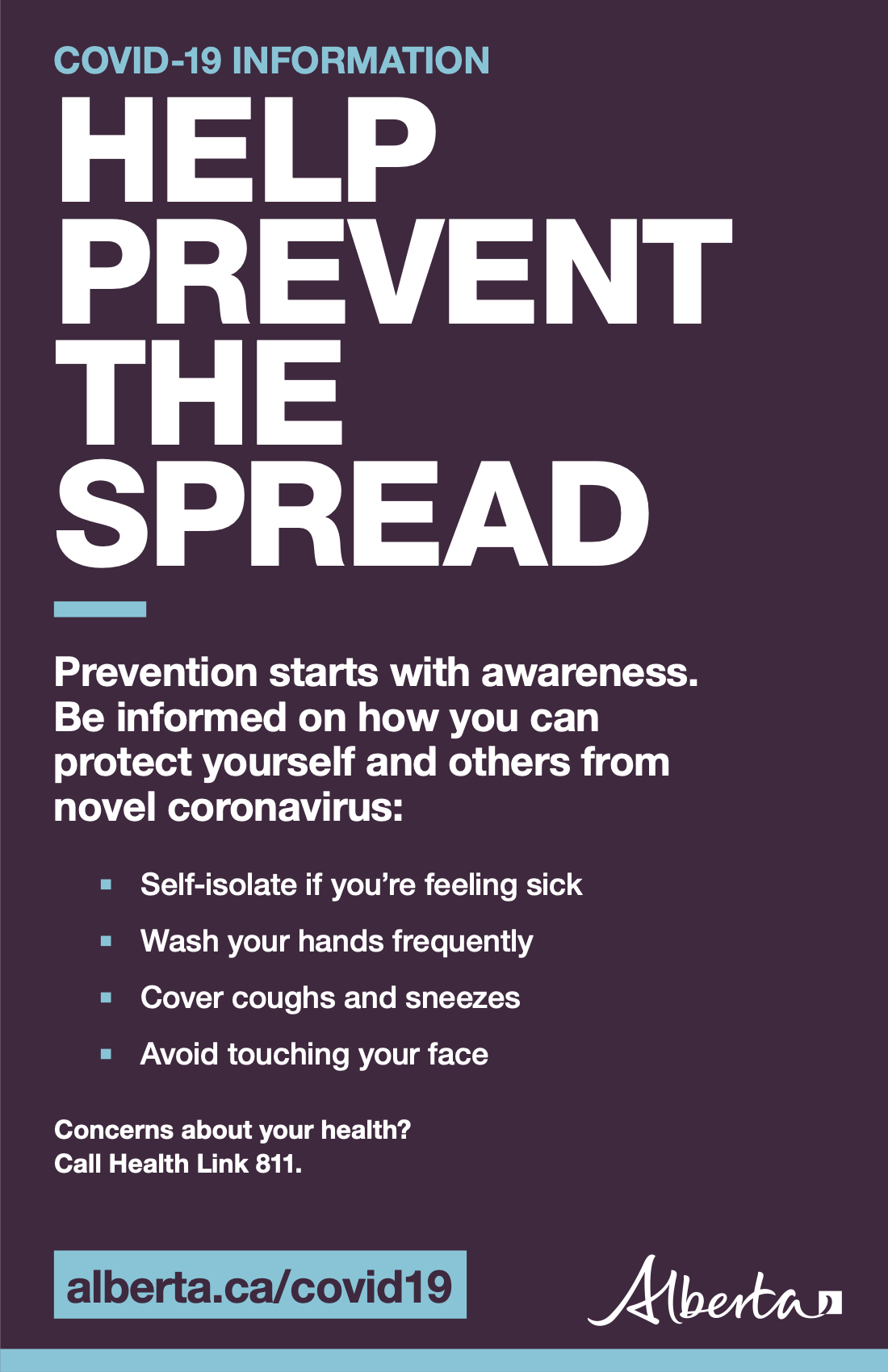
Prevention Awareness
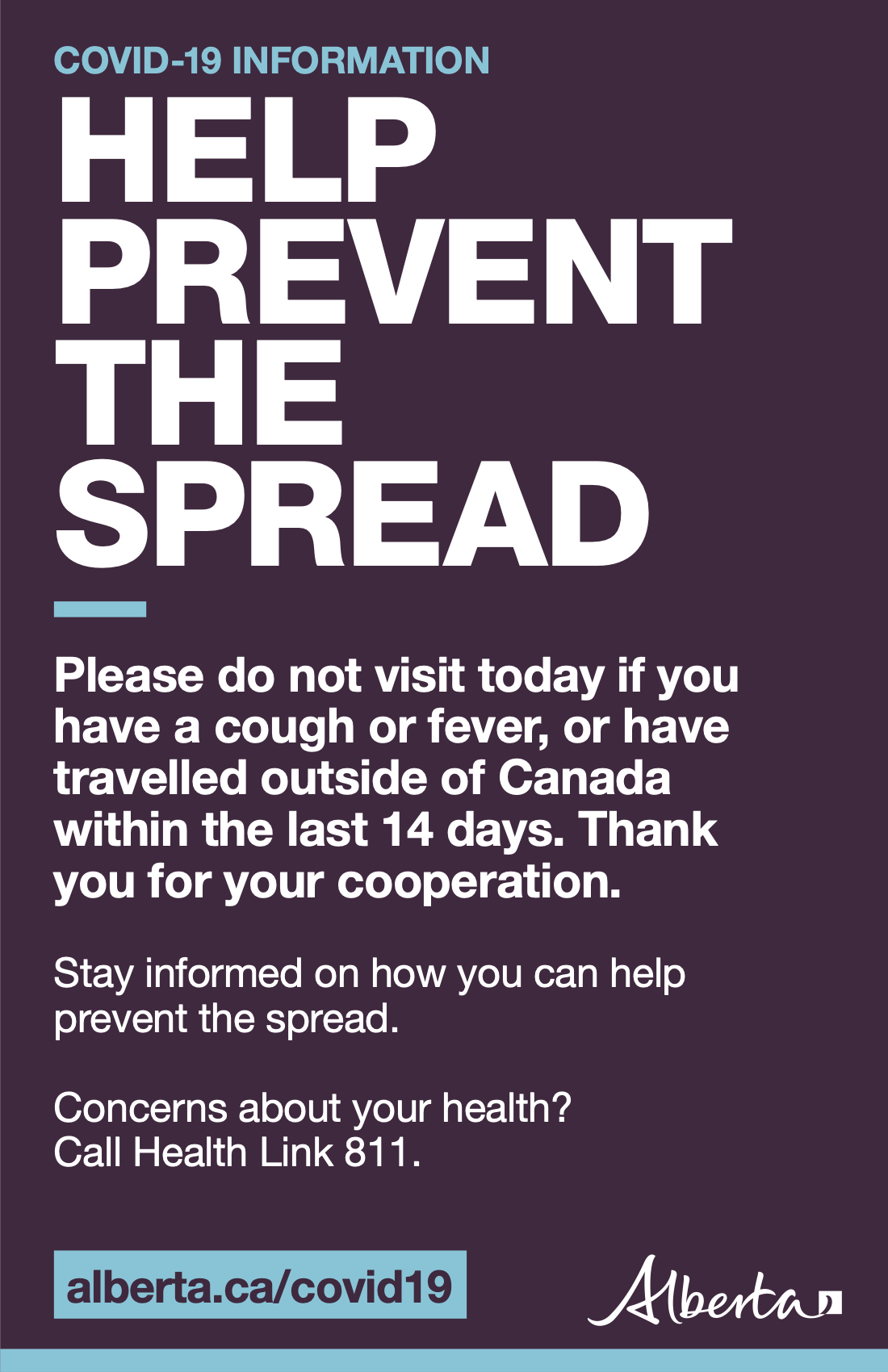
Prevent the Spread (for Facilities)

